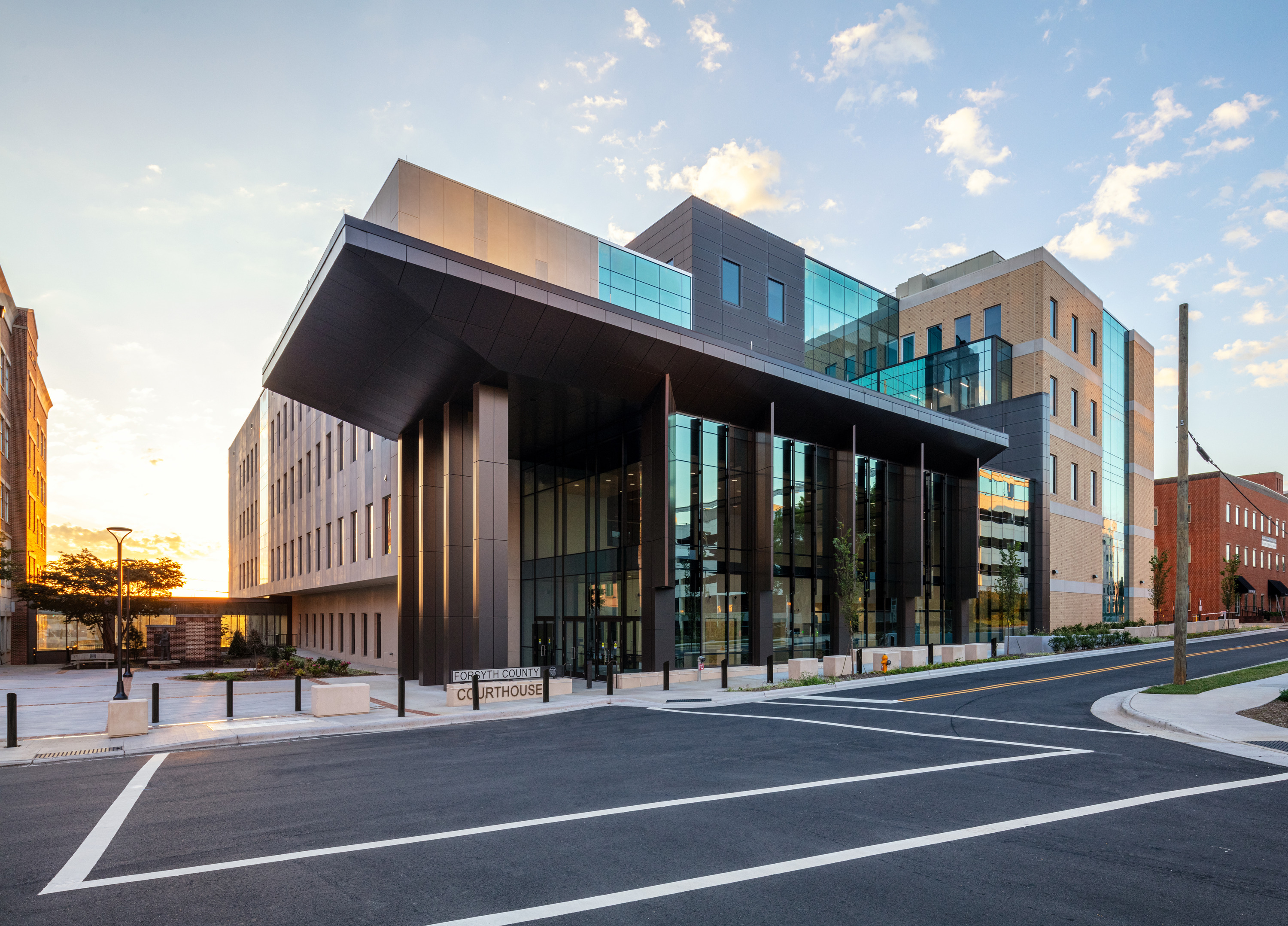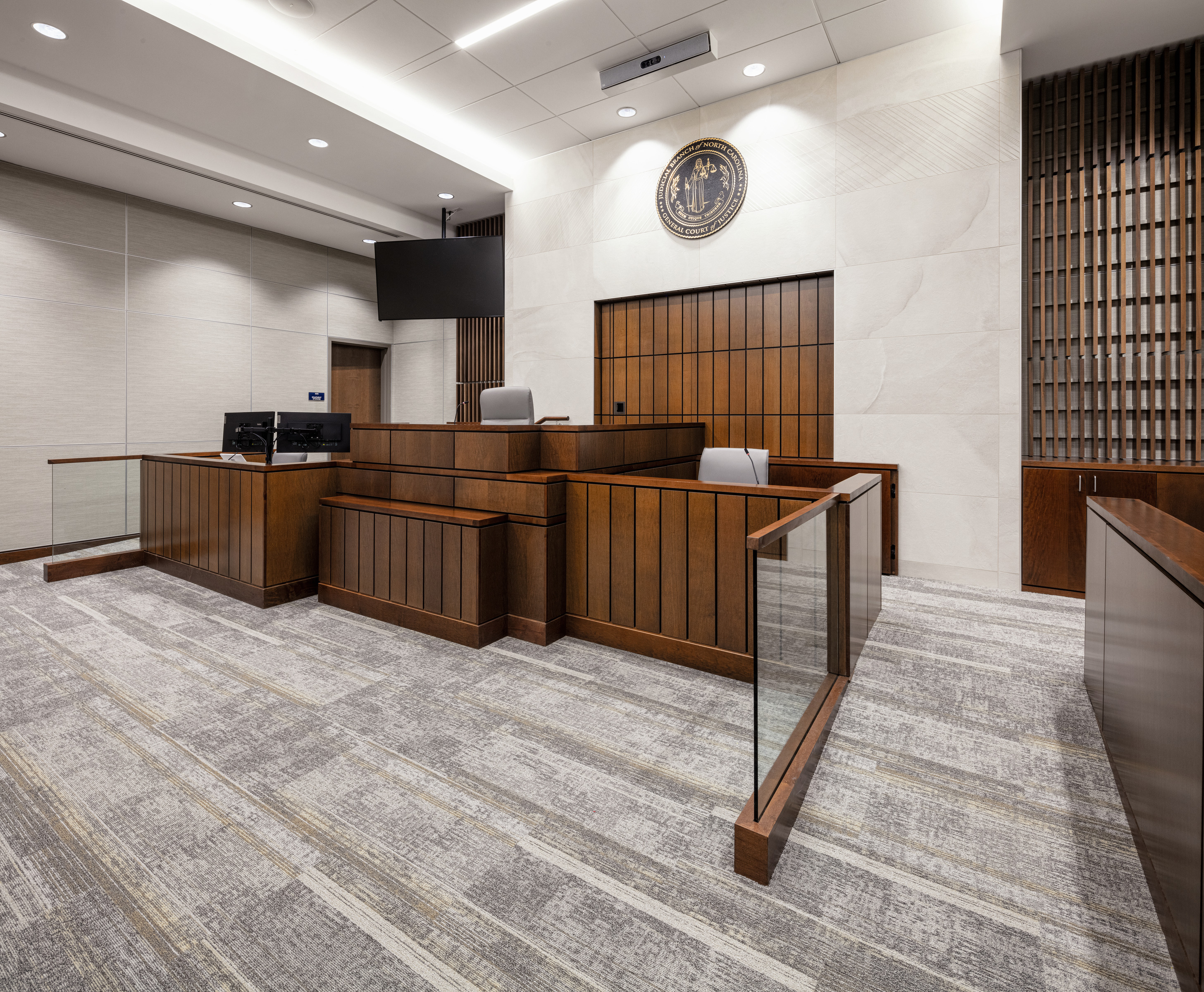Partners in Public Trust
 It’s uncommon for major construction projects to finish with enough surplus that the general contractor can return cash to the client. It’s even less common for that to happen to the tune of nearly $1 million. When that sum represents a return to the public, funds that can be reallocated to any number of other public services and facilities, our team has done its job.
It’s uncommon for major construction projects to finish with enough surplus that the general contractor can return cash to the client. It’s even less common for that to happen to the tune of nearly $1 million. When that sum represents a return to the public, funds that can be reallocated to any number of other public services and facilities, our team has done its job.
On the Forsyth County Courthouse project in Winston-Salem, North Carolina, Balfour Beatty and joint venture partner Samet Corporation did exactly that, leveraging every advantage of a collaborative Construction Manager at-Risk (CMAR) delivery method and lean solutions including to ensure the project finished on time and significantly under budget, a testament to the county’s and our team’s commitment to wise public stewardship.
Advantageous Accelerations
Early in project planning, Balfour Beatty, Samet and trusted industry partner Watson Electrical identified prefabrication as an ideal route to not just overall project success, but significant cost savings and schedule accelerations.
In addition to fully prefabricating multiple electrical rooms, Watson also prefabricated several electrical conduit stub-ups, all at their off-site facility. The team’s collective efforts ultimately accelerated the new building’s electrification by at least a month.
“Prefabricating any project elements off-site is an opportunity to save both time and money,” says Lee Littleton, Balfour Beatty project executive. “Every hour and every dollar saved counts, and those benefits can cascade through the rest of the project.” 
With electrical room and conduit construction moved off the project site, other trade partners – including concrete, framers, plumbers and more – deal with significantly less physical and logistical crowding. Modern construction projects are an incredibly complex machine of moving parts, and prefabrication offers the advantage of simplifying the machine, creating more reliability in outcomes and giving other trades more operational flexibility.
While not the primary goal, prefabricating significant portions of the project also reduced overall construction waste by eliminating the need for “cut-to-fit” on-site construction methods, which often result in many feet of wire, conduit and sheet metal waste.
“Prefabrication relies on the strength of our collaborative, client-first operations and our early involvement in design, as prefabricated elements and our on-site work to prepare for them must be built to exacting specifications,” Lee adds. “Projects like the Forsyth County Courthouse demonstrate the strength of this approach, like perfectly shaped pieces ready to slot into a nearly finished puzzle – no searching, re-cutting or seeing what fits.”
The courthouse’s prefabricated electrical rooms will also continue to generate savings for the County for years to come. Unlike ad-hoc one-off designs, their predictable and repeatable nature enables easier and more reliable repairs or modifications in the future.
Security Above and Below
Balfour Beatty’s and Samet’s significant returns to the client were even further punctuated by the courthouse’s many state-of-the-art security systems and security-oriented design features, including a unique inmate elevator and an underground tunnel between the courthouse and adjacent detention facility.
 Every day, the courthouse hears cases for detainees held in the Forsyth County Public Safety Center on the opposite corner of a busy downtown intersection. Before the new building was constructed, corrections officers were faced with transporting inmates by van, an onerous back, forth and u-turning process only to go just yards across the street.
Every day, the courthouse hears cases for detainees held in the Forsyth County Public Safety Center on the opposite corner of a busy downtown intersection. Before the new building was constructed, corrections officers were faced with transporting inmates by van, an onerous back, forth and u-turning process only to go just yards across the street.
The County knew it needed a safer and more efficient solution, so our team again took advantage of our early involvement to propose and fully price out multiple options, including a sky bridge and a jack-and-bore-style sloping tunnel diagonally crossing the intersection. The best option, which balanced budget and schedule constraints and utility clearances, was to tunnel under one road, turn 90 degrees and then tunnel under the second road.
“Tunneling on any project is a massive undertaking, and our team pulled out every stop to deliver as much success below ground as above,” Lee adds. “By contracting our excavation and concrete trade partners as early as possible and performing comprehensive safety evaluations, we successfully laid nearly 200 steel piles for stability without a single utility strike.”
Unique security measures continued above ground as well. In the tunnel’s courthouse terminus – a command center with several temporary holding cells – our team also constructed a one-of-a-kind secure elevator complex. Four elevator shafts arranged in a square transport inmates to secure pods on upper floors, all controlled by a Programmable Logic Controller (PLC). 
“The PLC system essentially provides complete security assurance to Forsyth County corrections officers,” Lee says. “It provides a rugged and intuitive system for locking down elevators in a security situation, a first-of-its-kind system for our team to install and one we were proud to provide.”
As much as public and civic clients like Forsyth County are concerned with stewardship of taxpayer dollars, a uniquely secure facility like the Forsyth County Courthouse requires a commensurate concern for public safety. With the building’s unique security features, enabled and built by the Balfour Beatty/Samet team, the County can ensure that inmates, officers and visitors are as safe as possible at all times.
Partners in Public Trust
When building vital public facilities, from community parks to public schools to police headquarters, Balfour Beatty understands that our clients take their public investiture seriously.
Our teams proudly take ownership of that responsibility. We come alongside the mission of public stewardship with industry-leading lean practices, tech-enabled construction solutions and a client-first approach to collaboration that ensure accelerated schedules, reliable budgets and successful projects that better our communities.